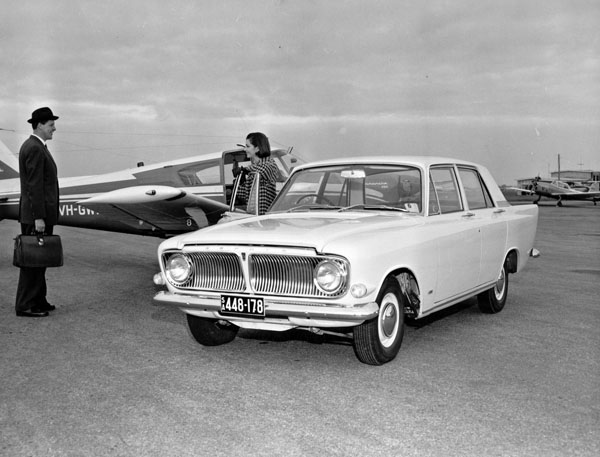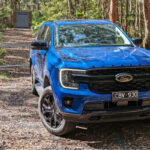The Ford Zephyr, although built in Dagenham, England bore a marked family resemblance to the Ford Customline suggesting that its styling actually originated in Detroit, however some European input must have taken place as the car has the road holding and suspension which we have come to associate with cars of European origin. Originally introduced to Australia in the third quarter of 1956 the Ford Zephyr was updated in June 1958. The styling changes were not substantial. A chrome grille with horizontal strutting and a deep red circular emblem replaced the familiar ‘dollar grin’.
This model saw the introduction of recirculating ball steering in place of the former ‘worm and peg’. Recirculating ball steering was an interesting variation on the old idea of a worm and sector. Only in this case, the contact was made on a series of ball bearings that rolled with the movement of the sector and so reduced friction. To provide an even lighter steering touch, Ford also increased the steering ratio from 16 to 1 to 18 to 1, a factor which made low speed steering somewhat easier but which also handicapped the driver who took the corner hard on loose surfaces.
Another interesting modification was the adoption of a concentric gearshift. Instead of two adjoining columns running from the steering wheel and gearshift to the floor the new gearshift was placed inside the steering column, giving a single post running from the steering wheel to the floor.
The engine remained the same in this model and the six-cylinder unit still developed 80 bhp at 4200 rpm. Unlike the Holden of the same period, the Zephyr was not a quiet car mechanically when the revs were being poured on. At normal driving speeds the noise level was quite acceptable but if put your foot down the engine started to make itself heard until it was distinctly noisy at flat chat.
In spite of the raised noise level the engine could be wound up and would keep punching out its power without any sign of stress. The handling of the car at high speed was also impressive and the brakes had ample reserve to peel back the rpm very rapidly from high speed if required.












